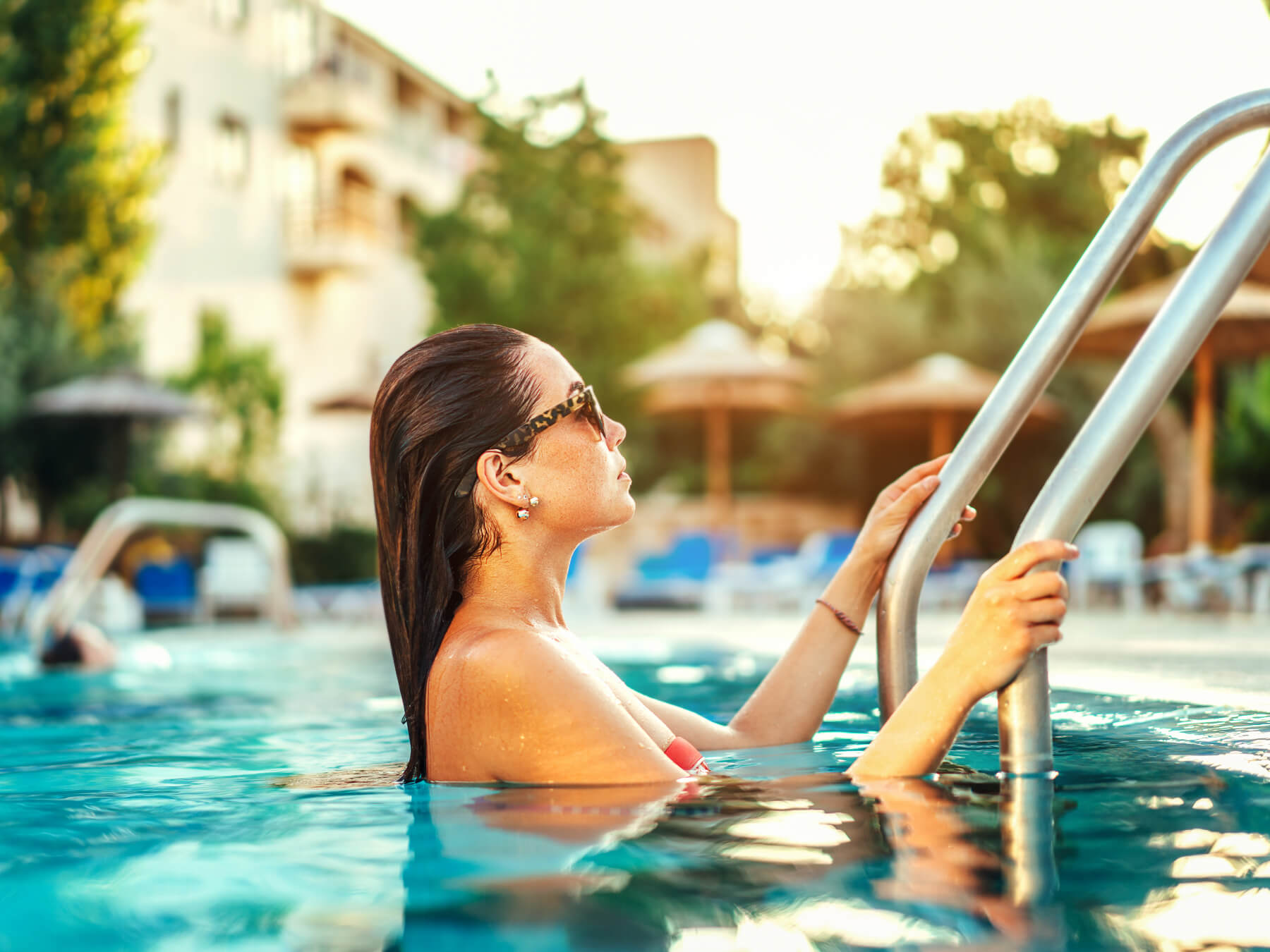© 2020-2025 Muza, All Rights Reserved
Perfect Poolside Photography
08 July 2024

Grace and Elegance Captured: Composition Emerging from the Pool
The art of photography often lies in capturing fleeting moments of grace and elegance. One such moment is when a girl in a swimsuit emerges from a pool, encapsulating the essence of fluidity, strength, and beauty. This composition, with its carefully considered elements and positioning, creates a powerful image that resonates with viewers. The following guide explores the nuances of this composition, from the setting and pose to the technical aspects that make it compelling.
Setting the Scene
The poolside offers a perfect backdrop for this composition. The clear, reflective water contrasts beautifully with the solid edge of the pool, creating a dynamic interplay between the elements. To enhance the visual appeal, ensure that the pool area is clean and the water is calm, with subtle ripples adding to the sense of movement.
The Pose
Central to this composition is the pose of the model. The girl is captured at the precise moment she emerges from the water, her body language exuding both strength and grace. Here's a detailed breakdown of her pose:
- Hands and Arms: The girl's palms are firmly planted on the edge of the pool, with her arms fully extended. This positioning not only supports her weight but also accentuates the length and elegance of her limbs.
- Back and Hips: Her back is arched, pushing her hips back slightly. This curvature creates a pleasing line from her shoulders to her waist, emphasizing her form and the natural grace of her movement.
- Neck and Head: Her neck is elongated, and her head is tilted backward. This elongation adds to the sense of elegance, while the tilt of her head conveys a relaxed, almost serene expression.
- Hair: Her wet hair is smooth and sleek, cascading down her back or slightly to the side, enhancing the feeling of fluidity and movement.
The Photographic Angle
Capturing this moment from the right angle is crucial. The photograph should be taken from a medium height, ensuring that the viewer's eye is drawn to the girl's form and the graceful lines of her body. This angle allows for a balanced composition, where the model is neither too dominant nor lost within the frame.
Lighting and Timing
Natural light is often the best choice for this type of composition. Aim to shoot during the golden hours – early morning or late afternoon – when the sunlight is soft and diffused. This lighting will enhance the skin tones and create gentle highlights on the water and the model's body.
- Backlighting: Positioning the model with the light source behind her can create a beautiful halo effect around her hair and body, emphasizing the wet sheen and adding depth to the image.
- Side Lighting: Alternatively, side lighting can highlight the contours of her body, creating a dramatic interplay of light and shadow.
Timing is also essential. The moment when she is just emerging from the water, with droplets still clinging to her skin, captures the sense of transition and movement. Be ready to take multiple shots in quick succession to ensure you capture this fleeting moment perfectly.
Composition Techniques
- Rule of Thirds: Place the model along one of the vertical lines of the rule of thirds grid. This technique ensures that she is the focal point while also allowing space to show the pool and background.
- Leading Lines: Use the edge of the pool as a leading line to draw the viewer's eye towards the model. This line can guide the viewer's gaze from the foreground to the background, creating a sense of depth.
- Symmetry and Balance: Ensure that the composition is balanced. The model's pose should be mirrored by the reflection in the water, if visible, to create symmetry and harmony in the image.
Post-Processing
After capturing the shot, post-processing can enhance the overall impact of the photograph. Use photo editing software to:
- Adjust Lighting and Contrast: Enhance the natural light, adjust shadows, and increase contrast to make the image pop.
- Highlight Details: Bring out the details in the water droplets and the texture of the model's skin and hair.
- Color Correction: Ensure that the colors are vibrant and true to life. Adjust the white balance if necessary to achieve the desired warmth or coolness.